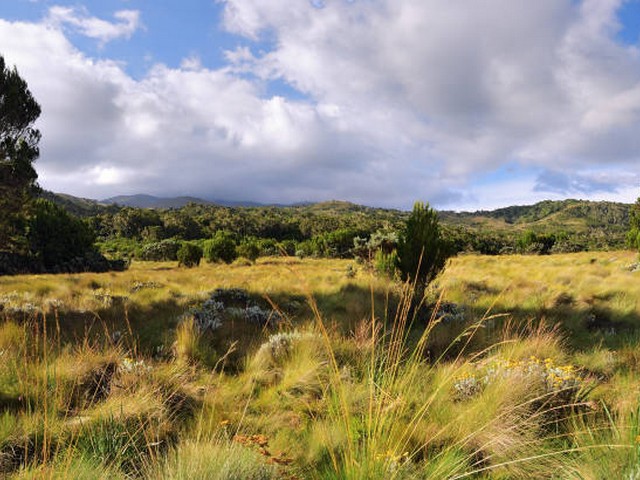Kilimanjaro Trekking for Experienced Hikers: An Unforgettable Challenge
Welcome to the exhilarating world of Kilimanjaro, a beacon for adventurers seeking to push the boundaries of their mountaineering skills. At the Kilimanjaro Centre for Trekking and Ecotourism (KCTE), we specialize in guiding seasoned hikers to the summit of Africa’s highest peak. If you have a passion for high-altitude trekking and are ready for an adventure that tests your endurance, you’re in the right place. Join us as we explore what makes Kilimanjaro trekking an essential experience for experienced hikers.
Why Kilimanjaro Appeals to Experienced Hikers
Mount Kilimanjaro is not just a mountain; it’s a multi-faceted expedition offering diverse terrains, ecological systems, and climatic conditions. Each route presents unique challenges and rewards, making it a must-try for those who have conquered other summits and seek new heights. The sense of achievement, coupled with breathtaking views and the richness of Tanzanian culture, makes Kilimanjaro a pinnacle of trekking accomplishments.
Choosing the Right Route for the Adventure-Seeker
The Lemosho Route: A Scenic Challenge
For experienced hikers looking for a picturesque yet challenging route, the Lemosho Route stands out. Starting from the lush rainforests at the base, this trail spans across the Shira Plateau before merging with the Machame Route to confront the Great Barranco Wall. The longer duration (typically 8 days) allows for better acclimatization and increases the success rate of reaching the summit.
The Northern Circuit: The Ultimate Test
The Northern Circuit is the longest route on Kilimanjaro, offering an extended trek that circumnavigates the most remote sides of the mountain. This route is perfect for hikers who enjoy solitude and want to immerse themselves fully in the natural beauty and tranquility of Kilimanjaro. It’s a test of endurance that also maximizes your acclimatization period, providing a higher success rate for reaching Uhuru Peak.
The Machame Route: Steep and Swift
Often known as the "Whiskey Route," Machame is popular among those who prefer a more demanding course. It’s steeper and faster than the Marangu Route and offers spectacular views and varied landscapes. This route is ideal for experienced hikers who are confident in their ability to adapt quickly to altitude changes.
Training and Preparation: Key to Conquering Kilimanjaro
Climbing Kilimanjaro is a serious undertaking even for the fittest hikers. Proper preparation is crucial, involving both physical fitness and understanding the mountain’s challenges. We at KCTE recommend starting your training at least six months before your trek. Focus on cardiovascular fitness, strength training, and altitude acclimatization, if possible. Additionally, familiarizing yourself with the symptoms of altitude sickness and how to mitigate them can make a significant difference in your trekking experience.
What to Expect During Your Trek
Day-to-Day on the Mountain
A typical day on Kilimanjaro starts with an early wake-up call followed by breakfast. You’ll then trek for approximately 5-7 hours, with regular breaks, before reaching the next campsite. Evenings are spent dining with fellow hikers and preparing for the next day’s climb. Nights can be cold, and rest is essential for your body to recover and acclimatize.
Reaching Uhuru Peak
The summit night is the most demanding part of the trek, involving a midnight start to reach the peak at sunrise. The final ascent is extremely cold and windy, and requires mental fortitude as much as physical endurance. Reaching Uhuru Peak, the highest point in Africa, is an indescribable moment filled with emotion and a sense of unparalleled accomplishment.
Why Book Your Kilimanjaro Trek with KCTE?
At Kilimanjaro Centre for Trekking and Ecotourism (KCTE), we are not just a tour operator; we are your partners in adventure. We ensure that every aspect of your Kilimanjaro trek is managed seamlessly, from expert guides and support staff to high-quality equipment and meals. Our deep respect for this majestic mountain and its surroundings drives us to offer the most comprehensive and responsible trekking experiences.
Our Commitment to Safety and Sustainability
Safety is paramount in all our expeditions. Our guides are trained to deal with altitude-related and medical emergencies, ensuring a safe trekking experience. Furthermore, we are committed to sustainable tourism practices to preserve the beauty and integrity of Kilimanjaro for future generations.
FAQs
What is the best time to climb Kilimanjaro?
The best times to climb Kilimanjaro are during the dry seasons: January to mid-March and June to October.
How do I manage altitude sickness?
Proper acclimatization is key. Our routes are designed to allow gradual ascent and adjustment. Additionally, staying hydrated and taking it slow can help alleviate symptoms.
What should I pack for my Kilimanjaro trek?
Key items include thermal layers, waterproof clothing, good quality hiking boots, a sleeping bag suitable for extreme cold, sun protection, and a hydration pack. A detailed packing list will be provided upon booking.
Can I trek Kilimanjaro solo?
While solo treks can be arranged, we generally recommend joining a group for safety and logistical reasons.
Ready to Conquer Kilimanjaro?
For experienced hikers searching for their next big adventure, Kilimanjaro offers an extraordinary challenge and the ultimate trekking accomplishment. Book your Kilimanjaro trekking experience with Kilimanjaro Centre for Trekking and Ecotourism (KCTE) today and take the first step towards standing on the roof of Africa. Visit our website or contact us directly to start planning your journey to the summit. Let’s make your dream of conquering Kilimanjaro a reality!




